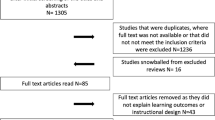Abstract
The primary goal of a residency program is to prepare trainees for unsupervised care. Duty hour restrictions imposed throughout the prior decade require that residents work significantly fewer hours. Moreover, various stakeholders (e.g. the hospital, mentors, other residents, educators, and patients) require them to prioritize very different activities, often conflicting with their learning goals. Surgical residents’ learning goals include providing continuity throughout a patient’s pre-, peri-, and post-operative care as well as achieving sufficient surgical experience levels in various procedure types and participating in various formal educational activities, among other things. To complicate matters, senior residents often compete with other residents for surgical experience. This paper features experiments using an optimization model and a real dataset. The experiments test the viability of achieving the above goals at a major academic center using existing models of delivering medical education and training to surgical residents. It develops a detailed multi-objective, two-stage stochastic optimization model with anticipatory capabilities solved over a rolling time horizon. A novel feature of the models is the incorporation of learning curve theory in the objection function. Using a deterministic version of the model, we identify bounds on the achievement of learning goals under existing training paradigms. The computational results highlight the structural problems in the current surgical resident educational system. These results further corroborate earlier findings and suggest an educational system redesign is necessary for surgical medical residents.

Similar content being viewed by others
Explore related subjects
Discover the latest articles and news from researchers in related subjects, suggested using machine learning.References
Watson JC (2008) Resident work hours: distinguishing resident service issues from education and safety. Neurology 71(5):375–376
ACGME (2008) ACGME Program Requirements for Graduate Medical Education in Surgery. Secondary ACGME Program Requirements for Graduate Medical Education in Surgery 1 July, 2009. http://www.acgme.org/acWebsite/downloads/RRC_progReq/440_general_surgery_01012008_u08102008.pdf
Day TE, Napoli JT, Kuo PC (2006) Scheduling the resident 80-hour work week: an operations research algorithm. Curr Surg 63(2):136–141
The ACGME’s Approach to Limit Resident Duty Hours: The Common Standards and Activities to Promote Adherence. Secondary The ACGME’s Approach to Limit Resident Duty Hours: The Common Standards and Activities to Promote Adherence 2007. http://www.acgme.org/acwebsite/dutyhours/dh_dhSummary.pdf
Rich EC, Liebow M, Srinivasan M et al (2002) Medicare financing of graduate medical education. J Gen Intern Med 17(4):283–292, published Online First: Epub Date
Turner JP, Rodriguez HE, Daskin MS, Mehrotra S, Speicher P, DaRosa DA (2012) Overcoming Obstacles To Resident-Patient Continuity of Care. Ann Surg 255(4):618–622
Franz LS, Miller JL (1993) Scheduling medical residents to rotations: solving the large-scale multiperiod staff assignment problem. Operations Research pp 269–279
Dexter F, Wachtel RE, Epstein RH et al (2010) Analysis of operating room allocations to optimize scheduling of specialty rotations for anesthesia trainees. Anesth Analg 111(2):520–524. doi:10.1213/ANE.0b013e3181e2fe5b, published Online First: Epub Date
Ozkarahan I (1994) A scheduling model for hospital residents. J Med Syst 18(5):251–265
Topaloglu S (2006) A multi-objective programming model for scheduling emergency medicine residents. Comput Oper Res 51(3):375–388
Topaloglu S (2009) A shift scheduling model for employees with different seniority levels and an application in healthcare. Eur J Oper Res 198(3):943–957
Topaloglu S, Ozkarahan I (2011) A constraint programming-based solution approach for medical resident scheduling problems. Comput Ind Eng 38(1):246–255
Cohn A, Root S, Esses J, et al (2006) Using mathematical programming to schedule medical residents. Working paper
Sherali HD, Ramahi MH, Saifee QJ (2002) Hospital resident scheduling problem. Prod Plan Control 13(2):220–233
Brasel K, Pierre A, Weigelt J (2004) Resident work hours: what they are really doing. Arch Surg 139(5):490–493, discussion 93–4
Rodriguez H, Turner JP, Speicher P et al (2010) A model for evaluating resident education with a focus on continuity of care and educational quality. J Surg Educ 67(6):352–358. doi:10.1016/j.jsurg.2010.09.004, published Online First: Epub Date
Chung EJ, Kim HJ, Park KH et al (2006) An evaluation of the time for nursing activity in a hospital using a full Electronic Medical Record System (EMR). Stud Health Technol Inform 122:499–502
Chung RS, Ahmed N (2007) How surgical residents spend their training time - The effect of a goal-oriented work style on efficiency and work satisfaction. Arch Surg 142(3):249–252
Rodriguez H, Turner JP, Speicher P, Daskin MS, Darosa D (2010). A Model for Evaluating Resident Education with a Focus on Continuity of Care and Educational Quality. J Surg Educ 67(6):352–358
Badiru AB (1992) Computational survey of Univariate and multivariate learning-curve models. IEEE Trans Eng Manag 39(2):176–188
Rogers DA, Elstein AS, Bordage G (2001) Improving continuing medical education for surgical techniques: applying the lessons learned in the first decade of minimal access surgery. Ann Surg 233(2):159–166
Turner J (2011) Overcoming obstacles to resident-patient continuity of care and equitable allocations of surgical experience. Industrial Engineering and Management Sciences. Dissertation, Northwestern University, Evanston, IL, p 119
Shapiro A (2003) Monte Carlo sampling methods. In: A R, A S (eds) Handbook of Stochastic Optimization. Elsevier Science Publishers, Amsterdam B.V
Kleywegt AJ, Shapiro A, Homem-De-Mello T (2002) The sample average approximation method for stochastic discrete optimization. SIAM J Optim 12(2):479–502
Linderoth J, Shapiro A, Wright S (2006) The empirical behavior of sampling methods for stochastic programming. Annals of Operations Research pp 215–241 doi: 10.1007/s10479-006-6169-8 [published Online First: Epub Date]
Lan G, Nemirovsky A, Shapiro A (2008) Validation analysis of robust stochastic approximation method. Optimization Online
Dexter F (2012) Operating room task durations. Secondary operating room task durations. http://www.franklindexter.net/bibliography_PredictingDuration.htm
Dexter F (2012) Bibliography - predicting duration. Secondary Bibliography - Predicting Duration . http://www.franklindexter.net/bibliography_PredictingDuration.htm
Law A (2007) Simulation modeling and analysis. McGraw-Hill
Author information
Authors and Affiliations
Corresponding author
Electronic supplementary material
ESM 1
(PDF 309 kb)
Electronic supplementary material
ESM 2
(DOCX 17.1 kb)
Rights and permissions
About this article
Cite this article
Turner, J., Kim, K., Mehrotra, S. et al. Using optimization models to demonstrate the need for structural changes in training programs for surgical medical residents. Health Care Manag Sci 16, 217–227 (2013). https://doi.org/10.1007/s10729-013-9230-6
Received:
Accepted:
Published:
Issue Date:
DOI: https://doi.org/10.1007/s10729-013-9230-6




